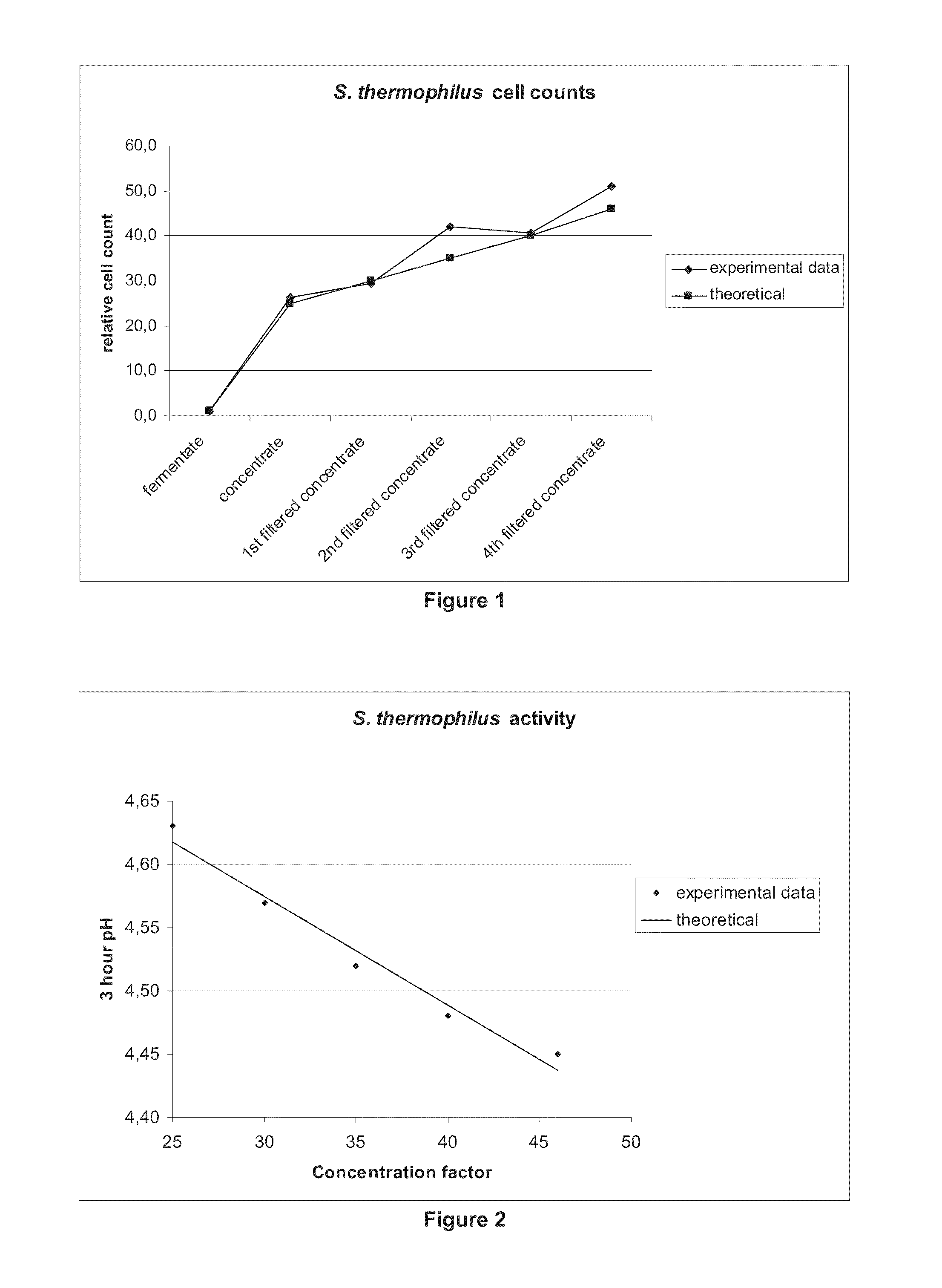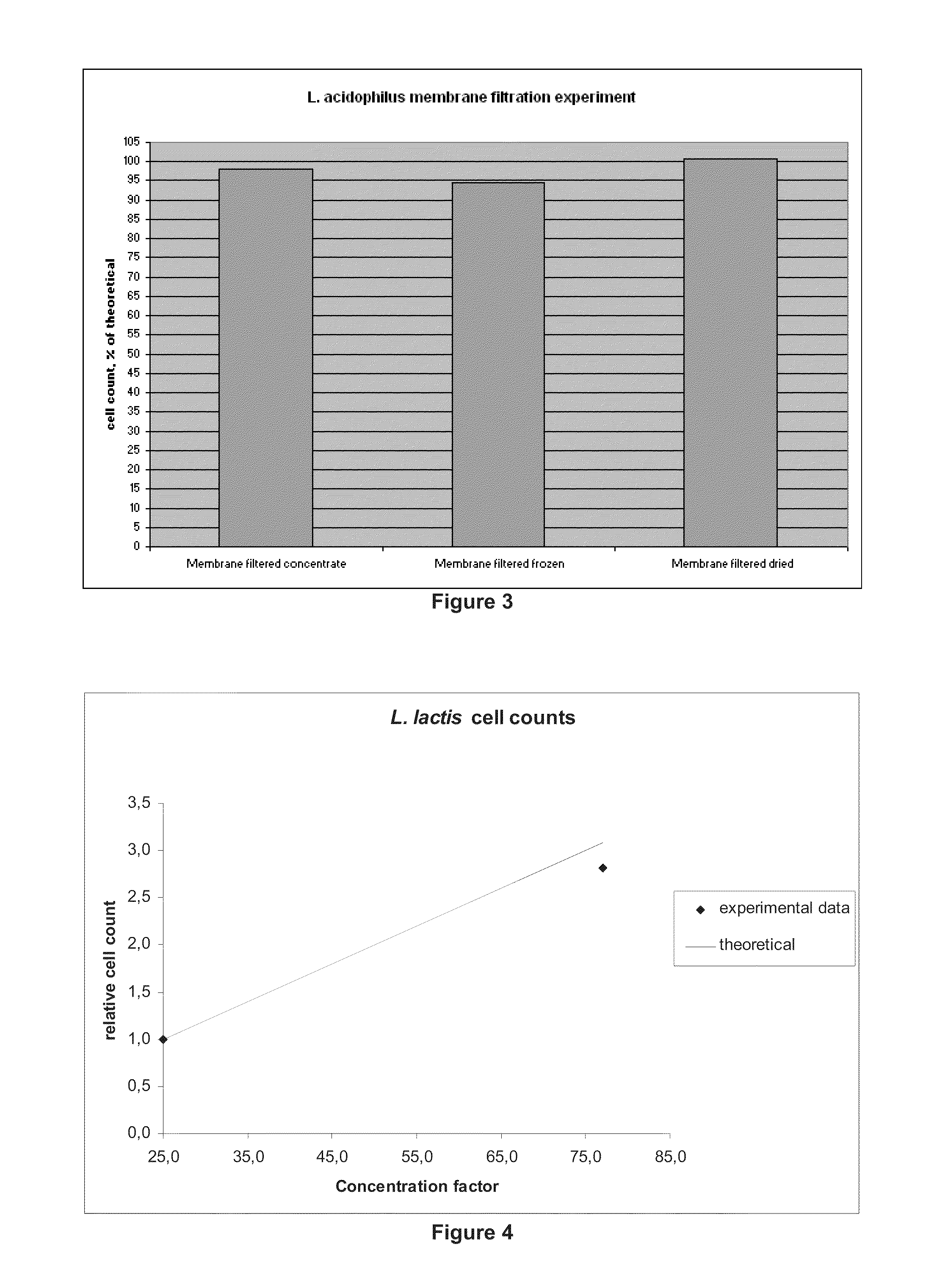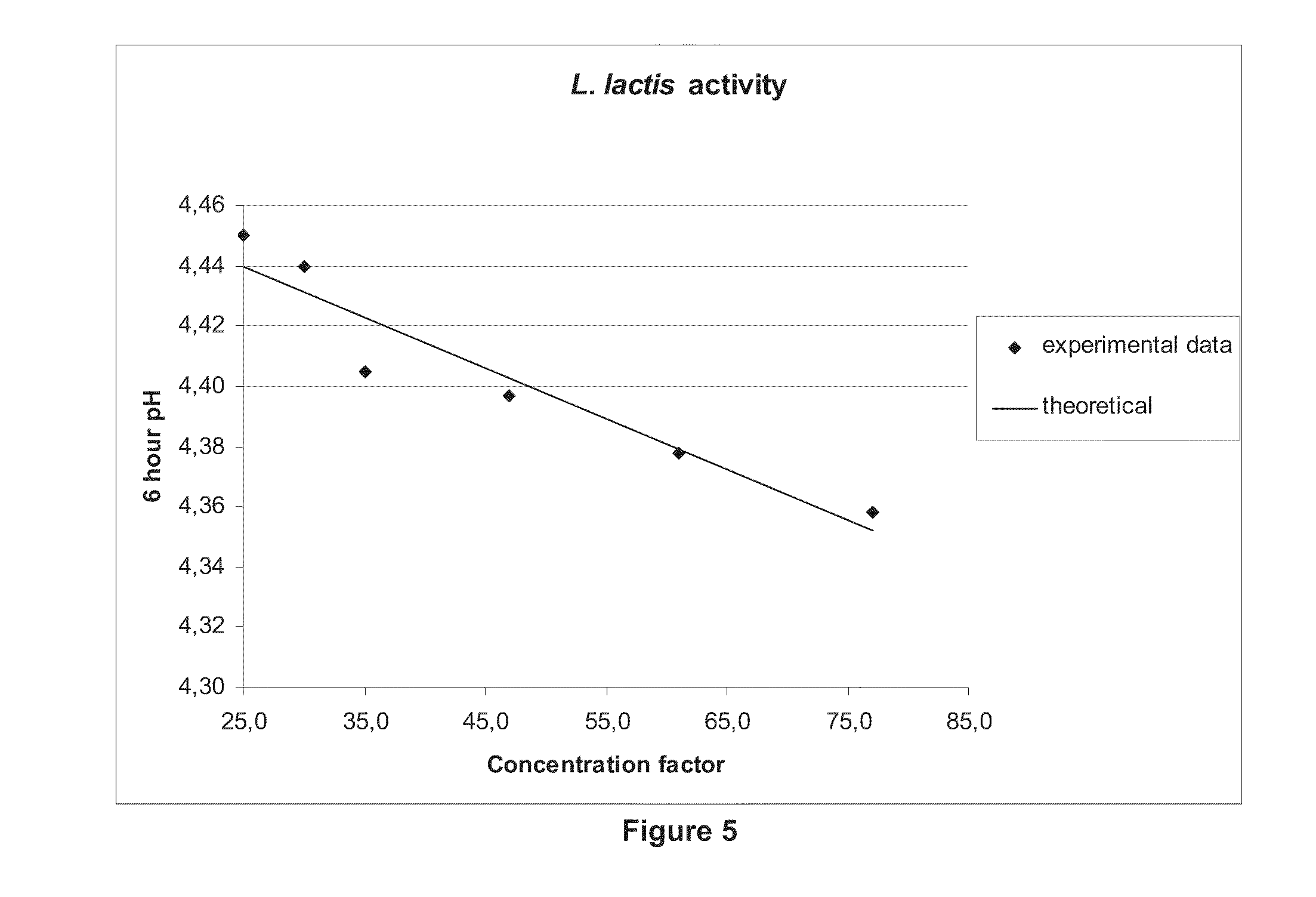Centrifugation and Filtration Methods for Concentrating Microorganisms
a technology which is applied in the direction of microorganism separation, microorganism testing/measurement, microorganism separation, etc., can solve the problems of difficult to efficiently concentrate and produce suspensions, the limits of centrifugation and filtration, and the inability to economically achieve filtration. , to achieve the effect of facilitating the achievement of higher concentration ratio, less loss and cost saving
- Summary
- Abstract
- Description
- Claims
- Application Information
AI Technical Summary
Benefits of technology
Problems solved by technology
Method used
Image
Examples
example 1
[0066]In this Example, a culture of Streptococcus thermophilus, grown in a standard medium containing milk solids, yeast extract and fermentable carbohydrate, under standard conditions, as known in the art was concentrated using the methods of the present invention.
[0067]First, 2500 L of the fermentation broth from the Streptococcus thermophilus culture were cooled down to 5-10° C. and concentrated via centrifugation using an Alfa Laval disk stack centrifuge at a gravitational force of 8304×g. The concentrate obtained was collected and maintained at 5-10° C.
[0068]A 100 kg batch of this concentrate obtained from the centrifugation step was concentrated using an Alfa Laval microfiltration system, with a polymeric membrane of pore size of 0.2 μm (Alfa Laval). The filtration step resulted in 45.8 kg of permeate (i.e., a concentration factor of 1.8×). However, the overall concentration factor was determined to be approximately 46×, as indicated in Table 1, below. Throughout the run, the ...
example 2
[0069]A culture of Lactobacillus acidophilus grown under standard conditions, in a standard medium containing milk solids, yeast extract and fermentable carbohydrate, as known in the art was concentrated using the methods of the invention.
[0070]First, 1600 L of the fermentation broth of the Lactobacillus acidophilus strain were cooled down to 5-10° C., concentrated via centrifugation, and stored as described in Example 1.
[0071]Then, 72 kg of the concentrate obtained after centrifugation were concentrated using an ultrafiltration system (TAMI) with a ceramic membrane of pore size of 150 kDa (TAMI). The filtration step produced 40 kgs of permeate, representing a concentration factor of 2.3×. Throughout the run, the collected permeate was crystal-clear, indicating no passage of cells through the membrane.
[0072]Samples of the concentrate were taken at the end of the run, and frozen for subsequent cell count and activity measurements.
[0073]The samples were then grown on MAS medium for 2 ...
example 3
[0075]A culture of Lactococcus lactis was grown under standard conditions in a medium containing milk solids, yeast extract and fermentable carbohydrate, as known in the art, was concentrated using the methods of the present invention.
[0076]First, 2400 L of the fermentation broth containing the Lactococcus lactis were cooled down to 5-10° C. and concentrated via centrifugation on a Westfalia stack disk centrifuge, using a gravitational force of 9300×g. The resulting concentrate was collected and stored at 5-10° C.
[0077]This concentrate was then further concentrated using a PTI microfiltration system, with a ceramic membrane of pore size of 0.2 μm (Coors). The resulting permeate was collected and measured, with a concentration factor of 3.1×. Throughout the run, the collected permeate was crystal-clear, indicating no passage of cells through the membrane.
[0078]Samples of concentrate were taken throughout the run, and frozen for subsequent cell count and activity measurements. The sam...
PUM
 Login to View More
Login to View More Abstract
Description
Claims
Application Information
 Login to View More
Login to View More - R&D
- Intellectual Property
- Life Sciences
- Materials
- Tech Scout
- Unparalleled Data Quality
- Higher Quality Content
- 60% Fewer Hallucinations
Browse by: Latest US Patents, China's latest patents, Technical Efficacy Thesaurus, Application Domain, Technology Topic, Popular Technical Reports.
© 2025 PatSnap. All rights reserved.Legal|Privacy policy|Modern Slavery Act Transparency Statement|Sitemap|About US| Contact US: help@patsnap.com



